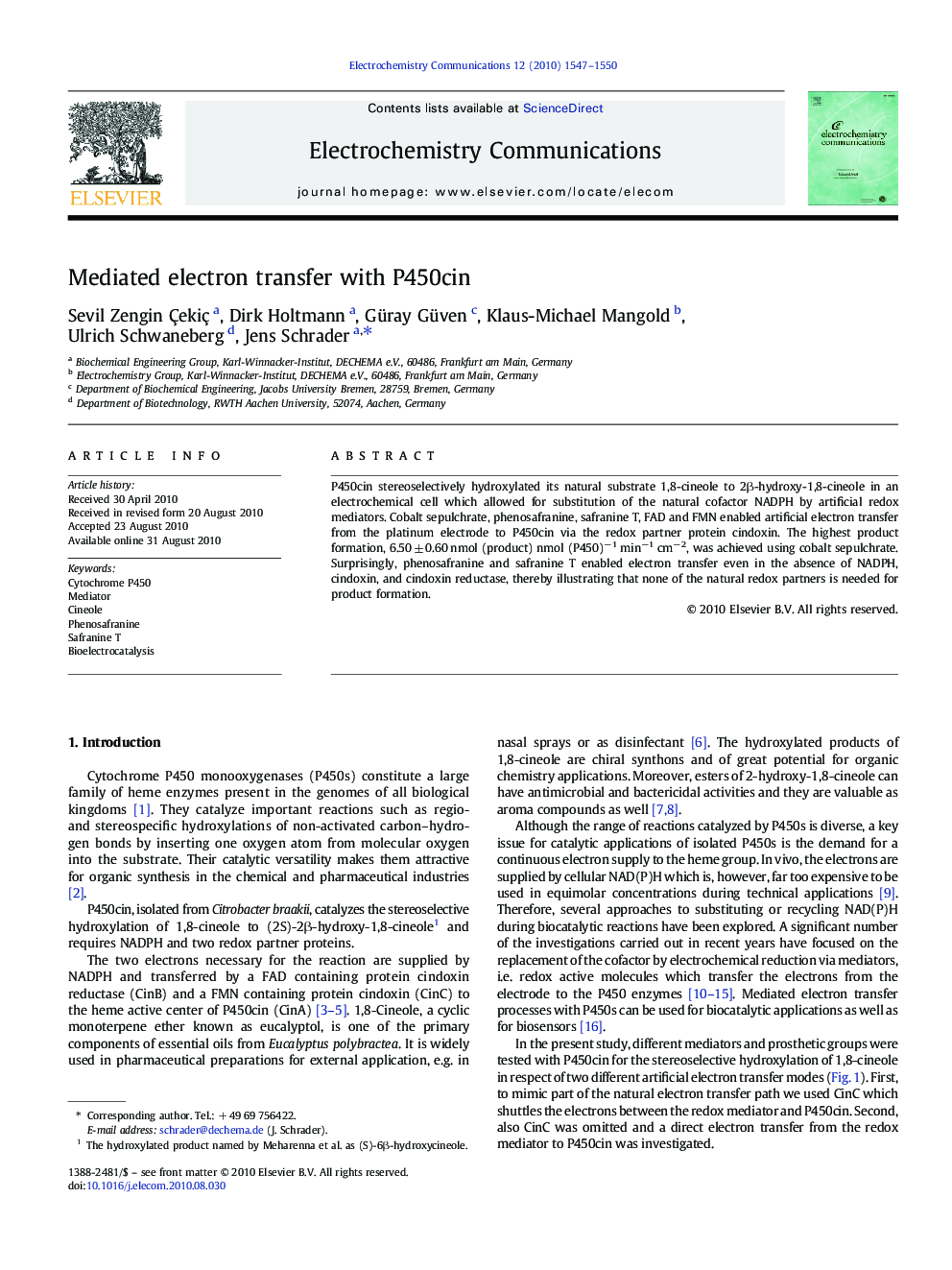| Article ID | Journal | Published Year | Pages | File Type |
|---|---|---|---|---|
| 180428 | Electrochemistry Communications | 2010 | 4 Pages |
Abstract
P450cin stereoselectively hydroxylated its natural substrate 1,8-cineole to 2β-hydroxy-1,8-cineole in an electrochemical cell which allowed for substitution of the natural cofactor NADPH by artificial redox mediators. Cobalt sepulchrate, phenosafranine, safranine T, FAD and FMN enabled artificial electron transfer from the platinum electrode to P450cin via the redox partner protein cindoxin. The highest product formation, 6.50 ± 0.60 nmol (product) nmol (P450)−1 min−1 cm−2, was achieved using cobalt sepulchrate. Surprisingly, phenosafranine and safranine T enabled electron transfer even in the absence of NADPH, cindoxin, and cindoxin reductase, thereby illustrating that none of the natural redox partners is needed for product formation.
Related Topics
Physical Sciences and Engineering
Chemical Engineering
Chemical Engineering (General)
Authors
Sevil Zengin Çekiç, Dirk Holtmann, Güray Güven, Klaus-Michael Mangold, Ulrich Schwaneberg, Jens Schrader,
